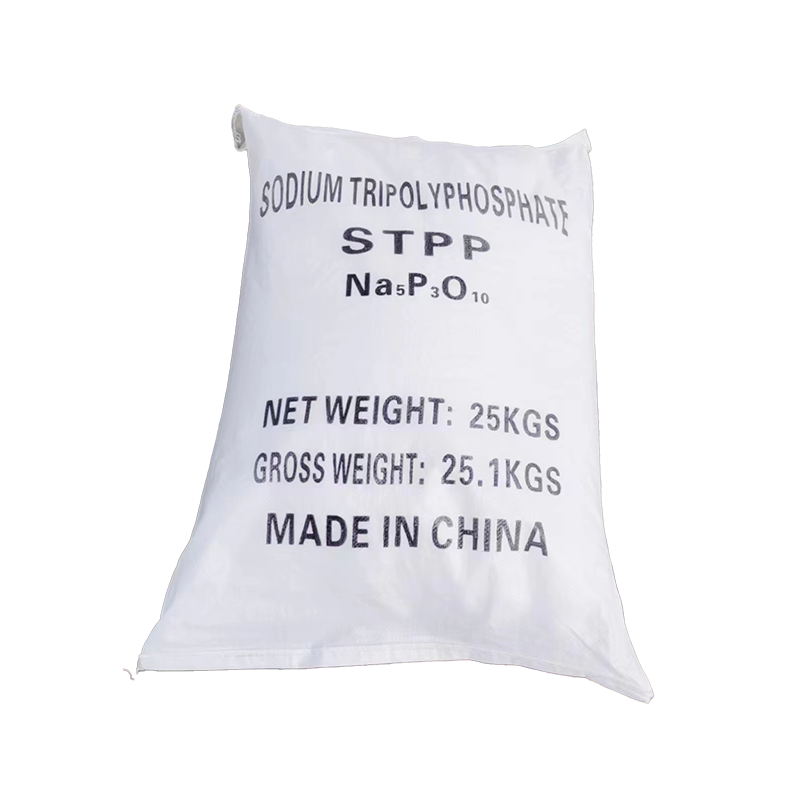How STPP Enhances Cleaning Power in Detergents: Unveiling the Science Behind Superior Cleaning
2025-06-30
Understanding STPP: The Backbone of Effective Detergents
Sodium Tripolyphosphate (STPP) is a versatile inorganic compound widely used in the formulation of detergents. Its unique structural properties and chemical characteristics enable it to enhance the cleaning power of various cleaning products. In this article, we explore the significance of STPP in detergents, how it works, its applications,

Understanding STPP: The Backbone of Effective Detergents
Sodium Tripolyphosphate (STPP) is a versatile inorganic compound widely used in the formulation of detergents. Its unique structural properties and chemical characteristics enable it to enhance the cleaning power of various cleaning products. In this article, we explore the significance of STPP in detergents, how it works, its applications, and the benefits it brings to both consumers and manufacturers.
What is Sodium Tripolyphosphate (STPP)?
Sodium Tripolyphosphate, commonly referred to as STPP, is a sodium salt of tripolyphosphoric acid. Its chemical formula is Na5P3O10. This compound is known for its high solubility in water and its ability to function as a builder in detergent formulations. Builders are substances that enhance the effectiveness of surfactants by softening water and increasing the availability of active cleaning agents.
The Role of STPP in Detergents
1. Water Softening Agent
One of the primary functions of STPP in detergents is its role as a water softening agent. Hard water, which contains high levels of calcium and magnesium ions, can interfere with the performance of detergents. STPP works by binding these ions, thus preventing them from reacting with surfactants. This action not only improves the efficacy of the detergent but also prevents the formation of insoluble compounds that can hinder cleaning performance.
2. Enhancing Surfactant Activity
Surfactants are the primary cleaning agents in detergents. They work by lowering the surface tension between water and dirt, allowing for better soil removal. STPP enhances surfactant activity by increasing the overall alkalinity of the detergent solution, promoting effective penetration into fabrics and surfaces. This synergistic effect leads to more efficient cleaning results.
3. Stain Removal Capabilities
STPP plays a crucial role in lifting stubborn stains. Its ability to sequester metal ions helps in releasing dirt from the fabric or surface. By preventing the redeposition of dirt and soil, STPP ensures that stains are effectively removed during the washing process. This property is particularly beneficial for laundry detergents that target heavily soiled garments.
Applications of STPP in Various Detergents
1. Laundry Detergents
In laundry detergents, STPP is commonly used to enhance cleaning efficiency. It allows for comprehensive dirt removal in various washing conditions, including cold and hot washes. Consumers benefit from brighter, cleaner clothes that maintain their color and integrity over time.
2. Dishwashing Detergents
STPP is also an essential ingredient in dishwashing detergents. It helps dissolve grease and food residues effectively, ensuring that dishes are left spotless. The presence of STPP allows for reduced scrubbing, making the dishwashing process more efficient and user-friendly.
3. Industrial Cleaning Products
In industrial applications, STPP is employed in various cleaning agents used for machinery and equipment. Its capacity to enhance cleaning power makes it ideal for heavy-duty formulations that demand high performance.
Benefits of Using STPP in Detergents
1. Improved Cleaning Efficiency
The inclusion of STPP in detergent formulations leads to a noticeable improvement in cleaning efficiency. Its ability to soften water and enhance surfactant performance allows consumers to achieve cleaner results with less product.
2. Cost-Effectiveness
Using STPP in detergents can be cost-effective for manufacturers. By enhancing cleaning power, companies can reduce the quantity of active ingredients needed, lowering production costs. This reduction often translates to savings for consumers without compromising on quality.
3. Environmental Considerations
While there are concerns related to phosphates in the environment, STPP is often seen as a safer alternative to other phosphate compounds. Manufacturers can formulate STPP-based detergents with lower environmental impact, particularly when it comes to wastewater treatment.
Challenges and Considerations When Using STPP
1. Regulatory Compliance
The use of phosphates in cleaning products is subject to regulatory scrutiny in many regions. Manufacturers must ensure that their STPP formulations comply with local regulations regarding phosphates in detergents. This compliance is essential for market access and consumer safety.
2. Balancing Performance and Environmental Impact
While STPP offers several benefits, companies need to balance performance with environmental impact. Efforts to reduce overall phosphate levels in detergents without sacrificing cleaning efficiency are ongoing within the industry. This balance is crucial for sustainability and consumer trust.
Future Trends in Detergent Formulations with STPP
As the cleaning industry continues to evolve, the role of STPP in detergent formulations is likely to adapt as well. Innovations in chemistry and environmental science may lead to new formulations that harness the benefits of STPP while addressing environmental concerns. Manufacturers are increasingly looking at eco-friendly alternatives and formulations that minimize phosphate use.
1. Alternative Phosphate-Free Formulations
With growing consumer demand for environmentally friendly products, there is a trend towards phosphate-free detergents. Manufacturers are exploring the development of alternative builders that can replicate the effectiveness of STPP without the environmental impact.
2. Innovations in Cleaning Technology
Advancements in cleaning technologies, such as enzyme-based systems, may also complement or replace STPP in some applications. These innovations aim to provide effective cleaning solutions that are both efficient and environmentally sustainable.
Frequently Asked Questions (FAQs)
1. What is the primary function of STPP in detergents?
STPP primarily acts as a water softening agent, enhancing the performance of surfactants and improving overall cleaning efficiency.
2. Is STPP safe for the environment?
While STPP is considered safer than some other phosphates, concerns about phosphates' impact on water systems have led to regulatory scrutiny. Responsible use and compliance with local regulations are essential.
3. Can STPP be used in all types of detergents?
Yes, STPP is versatile and can be used in laundry detergents, dishwashing detergents, and industrial cleaning products.
4. How does STPP enhance stain removal?
STPP helps sequester metal ions and prevents the redeposition of dirt, allowing for more effective stain removal during the washing process.
5. Are there alternatives to STPP in detergent formulations?
Yes, there are alternative builders being developed, although STPP remains a popular choice due to its proven effectiveness.
Conclusion
In conclusion, Sodium Tripolyphosphate (STPP) stands out as a crucial component in enhancing the cleaning power of detergents. Its multifunctional properties, including water softening, surfactant activation, and stain removal, make it invaluable to both manufacturers and consumers. As the industry evolves, balancing performance with environmental considerations will shape the future of detergent formulations. By understanding the benefits and challenges associated with STPP, we can appreciate its role in delivering superior cleaning results while paving the way for innovative and sustainable solutions in the cleaning industry.


 TESFA STPP
TESFA STPP